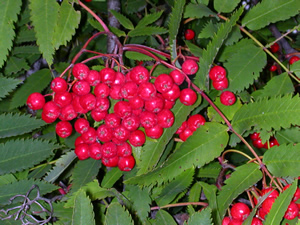
fall sweeps across the land, from the north. thought it would take a couple weeks, but all the trees are changing, the poplars (Populus alba) as pungent as ever when the air is still, yellowing from the inner leaves, outward to branch ends. the rowans (reynivithur, Sorbus aucuparia) berries hanging in heavy clusters, walking under them, invisible birds (wrens or músarrindil in Icelandic, Troglodytes troglodytes and redwings or skógarthröstur, Turdus iliacus) chatter incessantly somewhere above. only in the rowans. but it doesn’t seem that they are celebrating the berries, more, some nervous discussion about the approaching winter. nah, just noise of be-ing and living in the moment. the higher mountains far to the north, the ones that gate the fjord into the Arctic have now a heavy cap of snow. they do have more-or-less limited permanent snowfields, but the new snow completely covers the tops. in mid-winter, everything is covered from top to sea level. the sides of the fjord, which in the clear air seem much more vertical than they really are, broad and stepped, tinged with alizarin, rust, vermilion, and gold where the miniature Arctic willow and other small bushes are spectrum-shifting. musing on the dip of the Tertiary flood basalts that make up the entirety of this area to a depth of 3000 meters. as a mass, they dip slightly, perhaps 5 degrees towards the center of the island, rising layer on layer towards the sea on the flanks of the fjord. from adiabatic depression of the center of the island persisting from more extensive Ice Age glaciation perhaps? or something else? this feature complicated by the fact that the island underlain by abnormally buoyant magmatic activity, conjectured to be a mantle plume, though this particular concept is presently under contentious revision. the whole island, approximately the size of the US state of Georgia (100,000 km2), is an igneous petrologists and vulcanologists wet-dream (albeit a cold one!) — they focus on vesicles, picrites, and intrusives. of course, foreign glaciologists and their graduate students are always boondoggling here in the summers with expensive field work as well.
